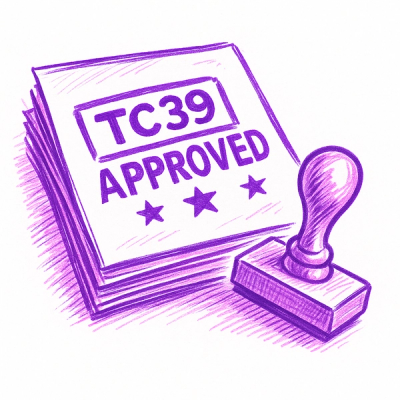
Research
/Security News
Malicious npm Packages Target WhatsApp Developers with Remote Kill Switch
Two npm packages masquerading as WhatsApp developer libraries include a kill switch that deletes all files if the phone number isn’t whitelisted.
parse-push-plugin
Advanced tools
Parse.Push plugin for Phonegap/Cordova/ionic. Works for both hosted Parse.com and open source parse-server.
Parse.com's Javascript API has no mechanism to register a device for or receive push notifications, which makes it fairly useless for PN in Phonegap/Cordova. This plugin bridges the gap by leveraging native Parse.com SDKs to register/receive PNs and expose a simple API to Javascript.
Works with hosted Parse.com and open source parse-sever
Simple Setup
Just cordova plugin add, set a couple of config.xml tags and you're ready to go.
Can handle cold start
Simple API
Manage push notification via events anywhere in your code
ParsePushPlugin makes these notification events available: openPN, receivePN, receivePN:customEvt.
To handle notification events in JS, do this:
ParsePushPlugin.on('receivePN', function(pn){
console.log('yo i got this push notification:' + JSON.stringify(pn));
});
//
// Use custom events to simulate separate communication channels using push notification.
// Just set an 'event' key in the push payload made from your server. If you set {event: "x"},
// you'll be able to catch it via "receivePn:x"
//
ParsePushPlugin.on('receivePN:chat', function(pn){
console.log('yo i can also use custom event to keep things like chat modularized');
});
ParsePushPlugin.on('receivePN:system-maintenance', function(pn){
console.log('yo, here is a system maintenance payload');
});
//
// When you open a notification from the system tray, `openPN` is also triggered.
// You can use it to do things like navigating to a different page or refreshing data.
ParsePushPlugin.on('openPN', function(pn){
//you can do things like navigating to a different view here
console.log('Yo, I get this when the user taps open a notification from the tray');
});
Multiple notifications
Android: to prevent flooding the notification tray, this plugin retains only the last PN with the same title field.
For messages without the title field, the application name is used. A count of unopened PNs is shown.
iOS: iOS handles the notification tray.
Foreground vs. Background
Android: Mimics the iOS behavior and create a notification when app is off or in background.
When app is in foreground, PN payloads are forwarded via the receivePN and receivePN:customEvt events.
iOS: Forward the PN payload to javascript in foreground mode. When app inactive or in background, iOS holds PNs in the tray. Only when the user opens these PNs would we have access and forward them to javascript.
Navigate to a specific view when user opens a notification
If your app is already on (or in the background), you can simply perform page switching in javascript.
Simply add a urlHash field in your PN payload that contains either a url hash, i.e. #myhash,
or a url parameter string, i.e. ?param1=a¶m2=b. Then catch that field via the openPN event and
go from there.
ParsePushPlugin.on('openPN', function(pn){
if(pn.urlHash){
window.location.hash = hash;
}
});
For cold start, you can also let your cordova app finish loading and use javascript to handle page switching. You can also carry out the page switching while the splashscreen is still visible, thus eliminating any flicker at the start.
Directly launching a non-default url via native code is also possible. Here are some hints on how to do that:
Android: If urlHash starts with "#" or "?", this plugin will pass it along as an extra in the
android intent to launch your MainActivity. You can then launch the custom url in
MainActivity.onCreate this way:
@Override
public void onCreate(Bundle savedInstanceState)
{
//
// your code...
//
String urlHash = intent.hasExtra("urlHash") ? intent.getStringExtra("urlHash") : "";
loadUrl(launchUrl + urlHash);
}
iOS: On cold start via notification, didFinishLaunchingWithOptions and this plugin's didLaunchViaNotification
have access to the payload. Those 2 functions are good starting points for launching custom url.
Read the Parse server push guide for an overview of the Push configuration.
####Install Push Certificates on Server:
Hosted Parse.com
p12 push certificate.Open Source parse-server
Setup parse-server
There are plenty of guides out there to help you get started on popular hosting services like Heroku and AWS. If you want to setup parse-server on your laptop for local development, here's a quick-start guide.
Once you have a working parse-server, generate your push credentials:
p12 certificate file from the previous step on your server.Update your parse-server configuration to use the push credentials. Here is an example:
{
"appId": "MY_APP_ID",
"masterKey": "SUPER_SECRET",
"cloud": "./myCloudDir/main.js",
"push": {
"android":{
"senderId": "SENDER_ID_AKA_PROJECT_NUMBER",
"apiKey": "SERVER_API_KEY_FROM_GOOGLE_DEVELOPER_CONSOLE"
},
"ios":{
"pfx": "my-push-certificate.p12",
"bundleId": "com.company.myapp",
"production": false
}
}
}
Restart your parse-server for the new settings to take effect.
####Add Plugin
Hosted Parse.com
cordova plugin add https://github.com/taivo/parse-push-plugin.git#parse-com
After this step, please use the parse-com branch's README to continue setting
up the plugin for use with hosted Parse.com.
Open Source parse-server For both Android and iOS, run
cordova plugin add https://github.com/taivo/parse-push-plugin
After adding the plugin to your project, create the following tags in config.xml:
<!-- required -->
<preference name="ParseAppId" value="PARSE_APPID" />
<preference name="ParseServerUrl" value="http://PARSE_SERVER:1337/parse/" />
<!-- required for Android -->
<preference name="ParseGcmSenderId" value="GCM_SENDER_ID" />
To get your GCM sender ID, enable GCM for your Android project in the Google Developer Console. Take note of your
project number. It should be a large integer like 123427208255. This project number is your GCM sender ID. It's the
same senderId used in parse-server push config.
You're all set. The plugin takes care of initializing Parse platform using the config.xml preferences mentioned above.
To customize push notifications, initialize Parse platform yourself, or use your own MainApplication.java in Android,
see the Advanced Configuration section.
When your app starts, ParsePushPlugin automatically obtains and stores necessary device tokens to your native ParseInstallation.
This plugin also registers a javascript callback that will be triggered when a push notification is received or opened on the native side.
This setup enables the following simple API and event handling.
API
ParsePushPlugin.getInstallationId(function(id) {
alert(id);
}, function(e) {
alert('error');
});
ParsePushPlugin.getSubscriptions(function(subscriptions) {
alert(subscriptions);
}, function(e) {
alert('error');
});
ParsePushPlugin.subscribe('SampleChannel', function(msg) {
alert('OK');
}, function(e) {
alert('error');
});
ParsePushPlugin.unsubscribe('SampleChannel', function(msg) {
alert('OK');
}, function(e) {
alert('error');
});
Receiving push notifications
Anywhere in your code, you can set a listener for notification events using the ParsePushPlugin object (it extends Parse.Events).
if(window.ParsePushPlugin){
ParsePushPlugin.on('receivePN', function(pn){
alert('yo i got this push notification:' + JSON.stringify(pn));
});
//
//you can also listen to your own custom events
// Note: to push custom event, include 'event' key in your push payload,
// e.g. {alert: "sup", event:'chat'}
ParsePushPlugin.on('receivePN:chat', chatEventHandler);
ParsePushPlugin.on('receivePN:serverMaintenance', serverMaintenanceHandler);
}
Silent Notifications
For Android, a silent notification can be sent by omitting the title and alert fields in the
JSON payload. This means the push notification will not be shown in the system tray, but its JSON
payload will still be delivered to your receivePN and receivePN:customEvt handlers.
####Android:
The actual code that handles Parse platform initialization is in ParsePushApplication.java.
Android knows to use this class due to the attribute android:name in <application> in 'platforms/android/AndroidManifest.xml'.
To preserve your customizations, this plugin sets android:name="github.taivo.parsepushplugin.ParsePushApplication"
if and only if android:name is not already defined. It does this during plugin installation. Similarly, when the plugin is
uninstalled, android:name will be removed only if its content matches github.taivo.parsepushplugin.ParsePushApplication exactly.
If you use your own Application class, don't forget to update android:name to point to it.
Optional: Write your own MainApplication and/or initialize Parse yourself: Look at ParsePushApplication.java. The comments contain all the explanations and hints you will need. Mimic the code to write your own customized implementation.
Optional: Customize background color for the push notification icon in Android Lollipop: Go to your platforms/android/res/values folder and create a file named colors.xml. Paste the following content in it and replace the hex color value of the form #AARRGGBB to your liking.
<?xml version="1.0" encoding="utf-8"?>
<resources>
<color name="parse_push_icon_color">#ff112233</color>
</resources>
####iOS:
If you want to customize your notification settings, use the method didFinishLaunchingWithOptions
in AppDelegate+parsepush.m as a guide to modify the same method in
your platforms/ios/ProjectName/Classes/AppDelegate.m.
When you initialize Parse from platforms/ios/ProjectName/Classes/AppDelegate.m, this plugin will
skip it's own version of Parse initialization and notification setup, that way it won't override
your customization.
Android: Starting with the Parse Android SDK v1.10.1 update, your app may crash at start and the log says
something about a missing method in OkHttpClient. Just update the cordova libs of your project
via cordova platform update android. If your previous cordova libs are old, you may run into
further compilation errors that has to do with the new cordova libs setting your android target
to be 22 or higher. Look at file platforms/android/project.properties and make sure that is
consistent with your config.xml
iOS: This plugin takes advantage of the cordova.exec bridge. If calls to cordova.exec only gets triggered
after pressing your device's Home button, try inspecting your Content-Security-Policy. Your frame-src must allow
gap: because the cordova bridge on iOS works via Iframe.
FAQs
Parse.Push plugin for phonegap/cordova/ionic
The npm package parse-push-plugin receives a total of 1 weekly downloads. As such, parse-push-plugin popularity was classified as not popular.
We found that parse-push-plugin demonstrated a not healthy version release cadence and project activity because the last version was released a year ago. It has 1 open source maintainer collaborating on the project.
Did you know?

Socket for GitHub automatically highlights issues in each pull request and monitors the health of all your open source dependencies. Discover the contents of your packages and block harmful activity before you install or update your dependencies.

Research
/Security News
Two npm packages masquerading as WhatsApp developer libraries include a kill switch that deletes all files if the phone number isn’t whitelisted.

Research
/Security News
Socket uncovered 11 malicious Go packages using obfuscated loaders to fetch and execute second-stage payloads via C2 domains.

Security News
TC39 advances 11 JavaScript proposals, with two moving to Stage 4, bringing better math, binary APIs, and more features one step closer to the ECMAScript spec.